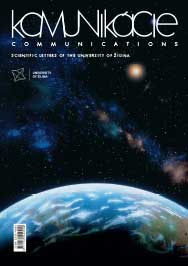Energy and Environmental Evaluation of the Selected Wooden Family Houses
Energy and Environmental Evaluation of the Selected Wooden Family Houses
Author(s): Pavol Durica, Silvia Badurova, Radoslav PonechalSubject(s): Energy and Environmental Studies, Environmental interactions
Published by: Žilinská univerzita v Žilině
Keywords: Wooden family houses; energy and environmental performance; building envelopes;
Summary/Abstract: Existing buildings are responsible for over 40 % of the world´s total primary energy consumption (data from IEA). The EU adopted the Energy Performance of Buildings Directive [1], which obliges Member States to reduced 20 % in greenhouse gas (GHG) emissions by 2020 compared with 1990 levels, a 20 % cut in energy consumption through improved energy efficiency by 2020 and a 20 % increase in the use of renewable energy by year 2020. The Directive also requires Member States to ensure that, after year 2020, all new buildings in the EU will have to consume “nearly zero” energy. Slovakia has excellent availability of wood and therefore it would be appropriate to build the family houses as wooden houses in combination with light sandwich envelope structures. However, more extensive use is still hampered by the prejudice about disadvantages of wooden structures, which are from the past. This paper evaluates the results of calculation and measuring two wooden family houses, located in the Slovak Republic, from the perspective of low energy construction and sustainable development principles. The first one is a wooden house constructed in the year 2000 and built under valid thermo-technical standards. The second one is a newly built passive family house. The results of energy calculations and measurements under real conditions in situ are presented. The calculations of the theoretical evaluation are appraised in accord with the Energy Performance of Buildings Directive 2002/91/EC [2] and EU and Slovak standards or codes. Environmental evaluations are performed for existing buildings and the results are confronted with the values from various buildings based on different materials (lightweight concrete blocks and lime-sand bricks).
Journal: Komunikácie - vedecké listy Žilinskej univerzity v Žiline
- Issue Year: 15/2013
- Issue No: 1
- Page Range: 88-95
- Page Count: 8
- Language: English

